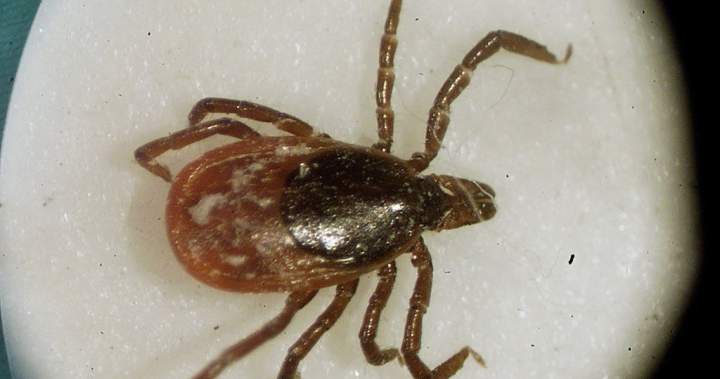If temperatures become too hot, much-maligned ticks are at risk of drying out. The parasites survive by retreating to moist areas like leaf litter and the soil.
“Even though it’s dry on top, they can find little bits of moisture in the soil. This weather is not wonderful for them. They’re in hiding, waiting until it gets cooler and moister,” Vett Lloyd, Mount Allison University biology professor, told Global News.
The ongoing wildfires across Atlantic Canada also have an impact on the survival of ticks.
“When they burn close to the ground, they’re obviously burning everything there, and when the ticks are in the top layer of soil, they’re going to get crisped,” Lloyd said.
But while forest fires will incinerate the bugs for now, the effects are only in the short-term, as they will return as the land regenerates.
“A very large forest fire, it knocked off the ticks for a year, but as the land regenerated, you got more grasses, and the grasses brought in mice,” she explained. “The mice are what moved the ticks around locally.”

Get breaking National news
For news impacting Canada and around the world, sign up for breaking news alerts delivered directly to you when they happen.
Over the past several weeks, Nova Scotia and New Brunswick have banned residents from entering Crown lands, but this does not mean the parasites have been left without a food source.
“Mostly, what the ticks are getting their food from are wild animals,” Lloyd said. “People and pets, we’re called accidental hosts. From a tick’s point of view, blood is blood.”
Over the past few years, the parasite’s population in the Atlantic region has been steadily increasing, which has also caused an uptick in the spread of Lyme disease.
“The Maritimes have experienced a very significant emergence of Lyme disease, particularly in Nova Scotia,” said Nicholas Ogden, a senior research scientist with the Public Health Agency of Canada.
“With now incidences of Lyme disease approaching that of neighbouring parts of the U.S., which are the parts with the highest incidence.”
In 2024, there were 2,350 cases of Lyme disease reported in Nova Scotia.
“So far to date in Nova Scotia, we’ve had 1,403 cases of Lyme disease that have been reported to public health,” said Dr. Jennifer Cram, a regional medical officer of health.
She says that prevention is the safest way to avoid ticks and the viruses they spread.
“Sometimes that’s changing the place where we’re going for a walk,” she said. “Being really aware that pets can bring ticks into the house, wearing insect repellent and doing those tick checks.”
Ticks usually wake up from their summer rest in mid-September and October.
“I don’t expect to see a decrease in the number of ticks, but that’s when we would find out,” Lloyd said.
© 2025 Global News, a division of Corus Entertainment Inc.
https://globalnews.ca/news/11350353/nova-scotia-ticks-lyme-disease/





